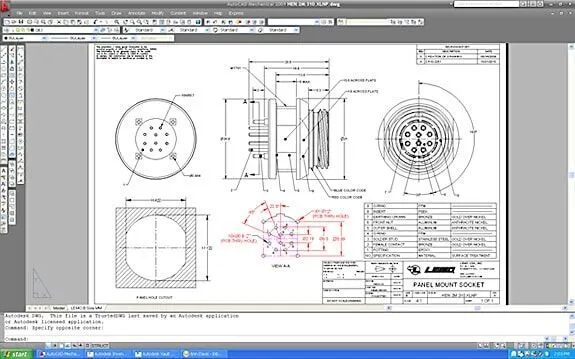What You Should Know About Reverse Engineering

What Does Reverse Engineering Mean?
Reverse Engineering is the process of studying and analyzing a product, part or device in order to learn the details of its design; the way it’s constructed and the way it operates. The goal of reverse may be to produce a copy or to make a better or more modern version. Reverse engineering can also be performed on software and computer programs as well as on, biological or chemical or organic matter; but for the purposes of this article, we are confining our discussion to reverse engineering as it applies to products or parts created or used in manufacturing.

The concept and activity of reverse engineering began with the analysis of hardware for commercial or military advantage. In this concept, reverse engineering has been used to understand the way something was designed and constructed when there was little or no actual knowledge about the procedures involved in the original production.
In manufacturing, design drawings and specifications may not be available for machine parts that are used in the production of products. It often becomes necessary to reverse engineer a part that needs to be replaced, updated or modernized. This often involved taking the machine apart piece by piece, redrawing the design and creating a replacement that mimics the attributes of the original. This can be a costly and time-consuming process.
Other uses for reverse engineering include:
- manufacturing products from incomplete specifications
- duplicating complex or exotic objects
- engineering devices that are needed but no longer in production
- product analysis.
Reasons for Reverse Engineering
Probably one of the earliest reasons for reverse engineering was espionage. Both military and commercial organizations have been known to use reverse engineering in order to learn about an enemy’s or competitors’ latest products. This type of espionage often involved dubious ethics, including stealing a prototype and dismantling it.
Fortunately, there are also many legitimate reasons for reverse engineering – usually involving the loss of documentation required to produce a necessary part or product or machine.
3D Scanning, CAD, and Reverse Engineering
Today, reverse engineering is still a complex job requiring an understanding of the way the part or product was designed, constructed and used. Fortunately, today’s technologies have made this complex job a bit easier.
CAD, and specifically 3D CAD, coupled with 3D scanning technology, makes it possible to create virtual models of nearly anything. The reverse engineering process begins by scanning the original physical object by using any one of a number of 3D scanning technologies like CMMs, laser scanners, structured light digitizers, or Industrial CT Scanning (computed tomography). This scanned data contains measurements of all surfaces of the original object, usually represented as a point cloud. However, the point cloud data lacks geometric properties. The point cloud data needs to be processed and modeled into a more usable format, such as a triangular-faced mesh, a set of NURBS surfaces, or a CAD model. A CAD virtual model can be used in 3D CAD, CAM, CAE or other software to manufacturing a new part or product that is exactly like the original; or the virtual model can be used to augment, improve or modernize the design for a better fit and better performance.
Advantages of Reverse Engineering
Reverse engineering, especially with today’s 3D scanning and 3D CAD technologies, can improve existing products, speed time to market, and save money. Instead of building a specific component from scratch, the original is 3D scanned, virtually “unbuilt” and redesigned for improved function, including full design documentation and clear build procedures. Reverse engineering can be used to analyze how a product works, what it does, and what components it consists of so that companies can estimate costs to recreated, as well as identify potential patent infringement or other legal issues.
Recent Posts


CAD Outsourcing Doesn’t Have to Be Done In India
CAD Outsourcing Doesn’t Have to Be Done in India Do a Google search for “CAD Outsourcing” and what you’ll find is lots of firms located in India, which is fine if you’re prepared to go off-shore for CAD services. But what if your U.S. based company prefers to stay a...

AutoCAD Fiber Optic Designs & Drawings
Before proceeding forward in explaining the affinity between AutoCAD and Fiber Optic, it would be prudent to rationalize the utility of optical cables. When communicating between systems, either via the internet or via an internal network system, a medium needs to be...

CAD Outsourcing: How to Get the Most Out of Engineering
In today’s competitive market, companies need as much help as possible. If you want to take a larger market share, you can start by outsourcing some of your work. This is a quick way to expand your engineering power without onboarding and training a new staff. This...
